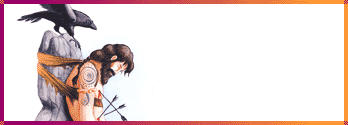 |
|||||||||||||||||||||||||||||||||||||||||||
|
Celtic Lands
Cuchulainn was ready for battle. His hair bristled and stood on end. One eye sunk into his head and the other became a big red, bulging orb. His foaming mouth spread from ear to ear and a column of blood shot out of his head. "The Hound of Culann" was ready to lead his Ulster men against the invasion by his bitterest enemy, Queen Medb. Unfortunately, Cuchulainn would have to advance alone — the Queen immobilized his army with a curse. The mighty Irish warrior took up arms anyway. Single-handed, he tore through Medb's ranks, leaving broken bodies on either side of him. The queen was frantic. Cuchulainn must be defeated. She joined forces with Morrigan, goddess of war, whose love Cuchulainn had rashly spurned, and three sorcerer daughters of a warrior he had killed. Their magic and betrayal brought a madness upon the Celtic hero. He was mortally wounded with his own spear. Bloody, pierced by spears, bruised by blows, Cuchulainn refused to fall in his final battle. He lashed himself to a stone pillar and died on his feet. Still, his enemies didn't dare approach his body, until three days later Morrigan flew down as a crow and settled on the corpse's shoulder. The Celts were not a nation, but a combination of peoples who spoke related languages. Ancient Celtic tribes migrated as far east as Asia Minor and as far west as Ireland. A good Celtic myth, like that of Cuchulainn, always involved fighting, honor, love, or a quest, complicated further by oaths and obligation or magic and enchantment. |
||||||||||||||||||||||||||||||||||||||||||

